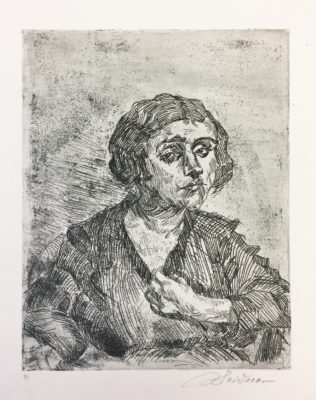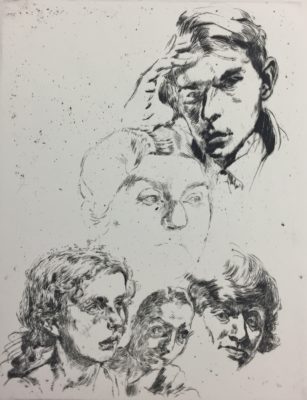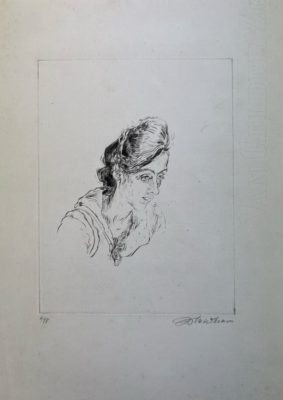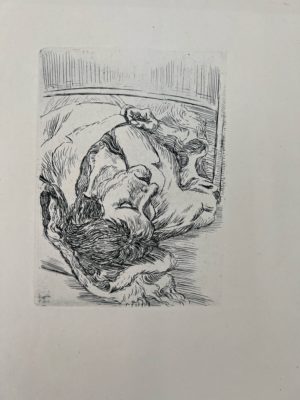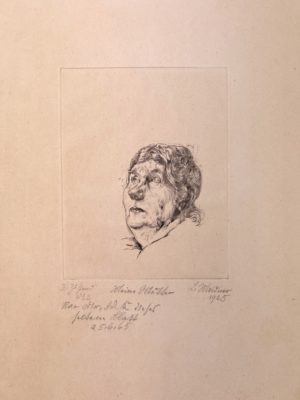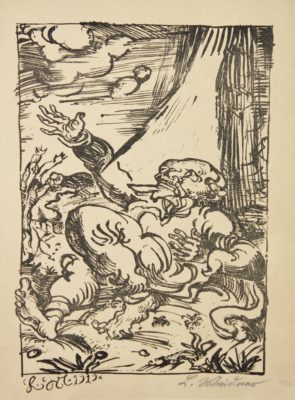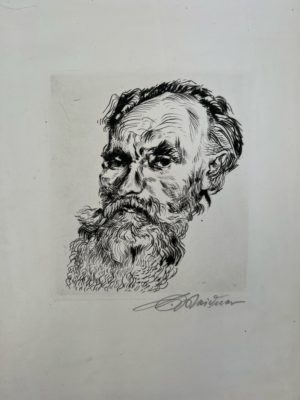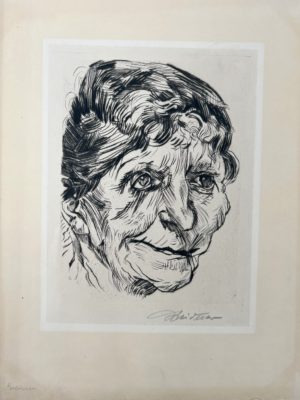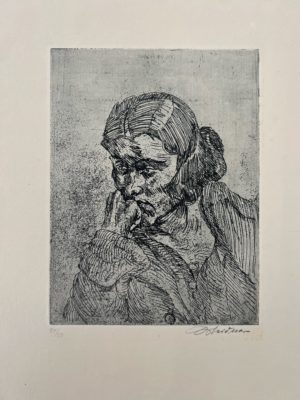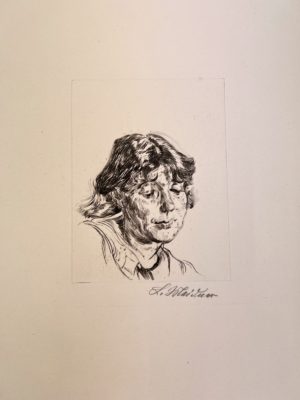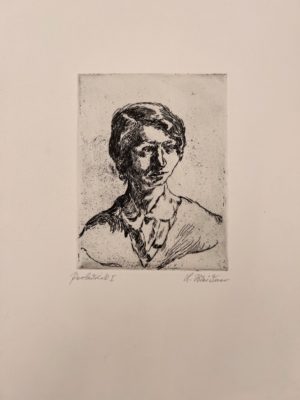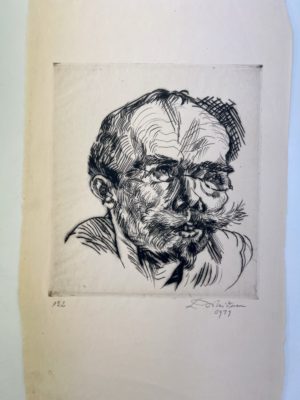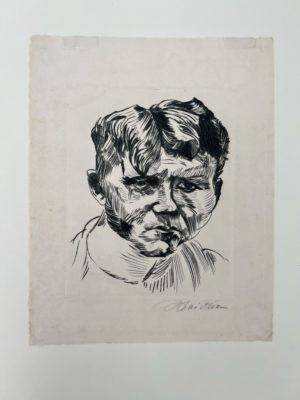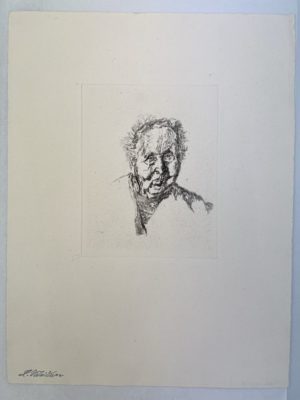LUDWIG MEIDNER

Born on April 1884 in Bernstadt, Oels district, Silesia. His parents ran a textile store on the market square.
1898 - 1901 Secondary school in Katowice. Arnold Zweig is one of his classmates.
1901 -1902 At his parents' request, begins an apprenticeship as a bricklayer, aiming to become an architect. However, breaks off the apprenticeship to apply to the Royal Art School in Breslau.
1903 - 1905 Attends the Royal Art School in Breslau, preliminary classes with H. Scheinert and K. Hanusch.
1905 - 1906 Breaks off academy training. Moves to Berlin. He earns his living by designing model furs for the Wulf-Schwertfeger studio in Berlin.
1906 First sales of drawings and paintings. Meidner learns printing techniques from Hermann Struck. First graphic works.
Departure for Paris in mid-July. Visits the Cormon, Julian and Hubert academies. Friendship with Amadeo Modigliani.
1907 Returns to Berlin after military muster. However, he is deferred from military service. The following years are full of privation. Creates further early prints ("Swearer").
1908 Moves to Katowice. Founds a painting and drawing school, but without success. Presumably first contact with his later patron Franz Kochmann. First oil painting on the subject of industrial settlement/suburbia.
1909 Returns to Berlin.
1911 In late 1911, Meidner receives a scholarship on the basis of an artistic assessment by Max Beckmann. A series of oil paintings on the theme of the suburbs is created.
Start of the "expressionist" work phase. Founding of the artist group "DIE PATHETIKER".
1912 Exhibition "DIE PATHETIKER" (Meidner, Steinhardt, Janthur) in Herwarth Walden's gallery "DER STURM". Meidner paints his first "Apocalyptic Landscape".
1913 - 1914 Acquaintance with Robert Delaunay in Berlin.
Printmaking: The important street and café scenes are created. Oil paintings with apocalyptic themes become the focus of his artistic work. Friendship with Ernst Wilhelm Lotz.
1914 The magazine "Kunst und Künstler" publishes his "Anleitung zum Malen von Großstadtbildern".
At the invitation of Franz Kochmann, Meidner and Ernst Wilhelm Lotz move to Dresden. Lotz falls as a war volunteer in the first days of the First World War.
The last example of the early street scenes is the drypoint work "Bautzener Straße". The portfolios "War" and "Streets and Cafés" are created.
Meidner returns to Berlin.
1915 Acquaintance with artists and writers: Conrad Felixmüller, George Grosz, Wilhelm Lehmbruck, Johannes R. Becher. Military muster again. First drawings on religious themes.
1916 Conscripted into the Landsturm, deployed as a French interpreter in a prisoner-of-war camp near Cottbus. Start of literary activity. The portfolio "Köpfe" is published.
1918 In February, first solo exhibition at Paul Cassirer in Berlin and subsequently at the Kestner-Gesellschaft, Hanover. Meidner is back in Berlin after the end of the war, where he is one of the founding members of the "November Group", but then lives temporarily in Bernstadt.
1919 Back in Berlin. End of the expressionist work phase. The expressive gesture now gives way to a curved, moving style. Lothar Brieger publishes the first biography of Meidner.
1919 - 1922 More than half of Meidner's prints were created in barely four years.
1920 Solo exhibition at I. B. Neumann, Berlin.
Paul Cassirer publishes the book "Septemberschrei" with texts written during Meidner's military service.
1921 In printmaking, etching takes the place of the drypoint technique used until then. In terms of content, Meidner turns to portraits that focus on the relationship to space.
1922 Solo exhibition at Ferdinand Möller, Berlin. Landscape etchings created in Hamburg and on Sylt.
1923 Meidner increasingly distances himself from his expressionist phase. He designs the sets for the film "Die Straße", directed by Karl Grune. New etchings on the theme of the city.
1924 – 1926
Teaches at the study studios for painting and sculpture in Berlin Charlottenburg, during which he meets his future wife Else Meyer. Preparation of the publication "Gang in die Stille".
1925
Solo exhibition with Emil Richter, Dresden. From now on only occasional prints.
1927 Marriage to Else Meyer
1927 - 1932 Features for Berlin newspapers
1929 Birth of his son David. "Gang in die Stille" is published by Euphorion, Berlin.
1934 Exhibition on Meidner's 50th birthday at the Jewish Museum Berlin.
1935 Meidner is branded a "degenerate artist". He works as a drawing teacher at the Jewish school Jawneh in Cologne.
1937 Represented with several works at the infamous "Degenerate Art" exhibition in Munich.
1939 Emigration with the family to London.
1940 – 1941
Internment as an "enemy alien" on the Isle of Man.
1941 – 1947
Lives in very tight financial circumstances in London. Makes ends meet with wakes and portraits of Jewish fellow citizens. His socially critical, often humorous drawings and watercolors remain without artistic recognition.
1949 Exhibition with Else Meidner at the Jewish Ben Uri Art Gallery in London.
1952 Visit to Germany. Two etchings are stylistically reminiscent of the pre-war period.
1953 - 1955 Final return from exile. Lives in a Jewish retirement home in Frankfurt am Main.
1955 - 1963 Hanna Bekker vom Rath finds him a studio in Marxheim near Hofheim. He works a lot, portraits and still lifes, which, however, do not reach the spirit of the times in their naturalistic depiction.
1959 Solo exhibition at the Städtische Galerie Wiesbaden.
1963 - 1966 Moves to Darmstadt. Retrospectives in Recklinghausen, Berlin and Darmstadt. Numerous high honors. Last lithographic self-portraits.
1966 Meidner dies on May 14 in Darmstadt.
(Source: Ludwig Meidner Society 2015, http://www.meidnergesellschaft.de)

